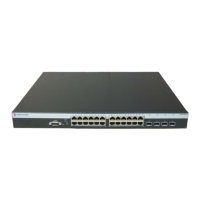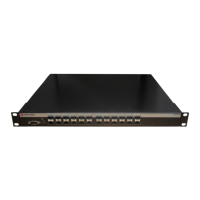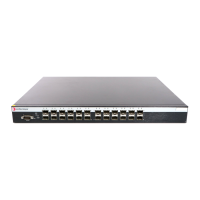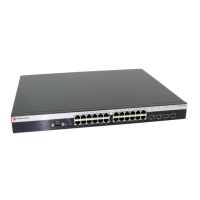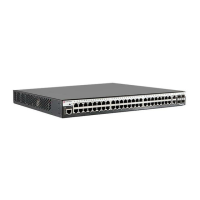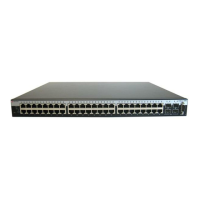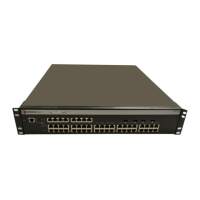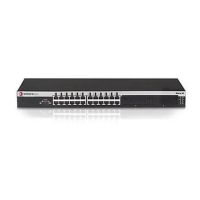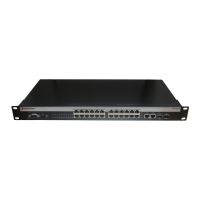Port Configuration Overview
8-6 Port Configuration
maximum number of packets which can be received per second with the set port broadcast
command: Maximum packet per second values are:
• 148810 for Fast Ethernet ports
• 1488100 for 1-Gigabit ports.
• 14881000 for 10- Gigabit ports
Use the show port broadcast command to display current threshold settings. Use the clear port
broadcast command to return broadcast threshold settings to the default of 14881 packets per
second.
Protected Port Mode
The Protected Port feature is used to prevent ports from forwarding traffic to each other, even
when they are on the same VLAN. Ports may be designated as either protected or unprotected.
Ports are unprotected by default. Up to three groups of protected ports are supported.
Ports that are configured to be protected cannot forward traffic to other protected ports in the
same group, regardless of having the same VLAN membership. However, protected ports can
forward traffic to ports which are unprotected (not listed in any group). Protected ports can also
forward traffic to protected ports in a different group, if they are in the same VLAN. Unprotected
ports can forward traffic to both protected and unprotected ports. A port may belong to only one
group of protected ports.
This feature only applies to ports within a switch or a stack. It does not apply across multiple
switches in a network.
Ports are added to a protected port group with the set port protected command. Up to three
groups may be configured. A name can be assigned to a group with the set port protected name
command. In the following example, ports 1 through 4 are assigned to group id 1, and the name
“group1” is assigned to that group id.
C5(su)->set port protected ge.1.1-4 1
C5(su)->set port protected name 1 group1
C5(su)->show port protected ge.1.1-4
Group id Port GroupName
-------------------------------------
1 ge.1.1 group1
1 ge.1.2 group1
1 ge.1.3 group1
1 ge.1.4 group1
Use the clear port protected command to remove ports from protected mode or to remove a group
id from protected mode. Use the clear port protected name command to remove a name from a
group id.
Displaying Port Status
Table 8-1 on page 8-7 lists additional commands that can be used to display port status.
Note: Class of Service functionality can also be used to control broadcast, unknown unicast, and/or
multicast flooding. This feature prevents configured ports from being disrupted by a traffic storm by
rate-limiting specific types of packets through those ports. Refer to “Flood Control” on page 17-9 for
more information.
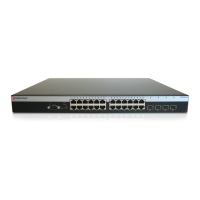
